3. A.H. Musfirah and A.G. Jaharah, Magnesium and Aluminum Alloys in Automotive Industry, J. Appl. Sci. Res. 8(9) (2012) 4865ŌĆō4875.
5. A. Karim, J. Bae, D. Kam, C. Kim, and Y. Park, Critical Influence of Rivet Head Height on Corrosion Performance of CFRP / Aluminum Self-Piercing Riveted Joints,
Corros. Sci. Technol. 18(3) (2019) 92ŌĆō101.
https://doi.org/10.14773/cst.2019.18.3.92
[CROSSREF] 7. L. Berger, M. Lesemann, C. Sahr, S. Hart, and R. Taylor. CARSuperLIGHT-CAR - the Multi-Material Car Body. In: 7th European LS-DYNA Conference; Salzburg, Austria. (2009), p. 1ŌĆō10
8. S. A. Choudry, S. M├╝ller, U. Alber, F. Riedel, and D. Landgrebe, A Multidimensional Assessment and Selection Methodology, Optimized Decision-making of Joining Technologies in Automobile Body Development,
Procedia Manuf. 21 (2018) 281ŌĆō288.
https://doi.org/10.1016/j.promfg.2018.02.122
[CROSSREF] 10. F. Shahid, A. A. Khan, M. Saqib, and
. Hameed, Mechanical and Microstuctural Analysis of Dissimilar Metal Welds, IJRRAS. 25(1) (2015) 6ŌĆō14.
12. T. Sakayama, G. Murayma, Y. Naito, K. Saita, Y. Mi. yazakki, H. Oikawa, and T. Nose, Dissimilar Metal Joining Technologies for Steel Sheet and Aluminum Alloy Sheet in Auto Body, Nippon Steel Tech. Rep. 393(103) (2013) 91ŌĆō98.
13. M. J. F. G├Īndara, Recent Growing Demand for Magnesium in the Automotive Industry, Mater. Tehnol. 45(6) (2011) 633ŌĆō637.
21. A. Ambroziak, M. Korzeniowski, and P. Kustro┼ä, Friction Welding of Dissimilar Metal Joints with Intermediate Layers, J. Achievment Mater. Manuf. Eng. 21(2) (2007) 37ŌĆō40.
22. D. Campanella, P. R. Spena, G. Buffa, and L. Fratini, Dissimilar Al/Steel Friction Stir Welding Lap Joints for Automotive Applications,
AIP Conf. Proc. 1769 (2016) 100005
https://doi.org/10.1063/1.4963499
[CROSSREF] 23. Y. F. Sun, H. Fujii, N. Takaki, and Y. Okitsu, Micro- structure and Mechanical Properties of Dissimilar Al Alloy/Steel Joints Prepared by a Flat Spot Friction Stir Welding Technique,
Mater. Des. 47 (2013) 350ŌĆō357.
https://doi.org/10.1016/j.matdes.2012.12.007
[CROSSREF] 25. M. Lee, S.W. Kim, A. M. Nasiri, and N. Y. Zhou, Effects of the Types of Coating on the Laser Brazing Characteristics of Dissimilar Joints between Mg Alloy and Steel Sheet,
J. Korean Weld. Join. Soc. 31(4) (2013) 7ŌĆō12.
https://doi.org/10.5781/KWJS.2013.31.4.7
[CROSSREF] 27. G. Costanza, V. Crupi, E. Guglielmino, A. Sili, and M. E. Tata, Metallurgical Characterization of an Explosion Welded Aluminum/Steel Joint Welding, La Metall. Ital. 11 (2016) 17ŌĆō22.
34. K. J. Lee, S. Kumai, T. Arai, and T. Aizawa, Interfacial Microstructure and Strength of Steel/Aluminum Alloy Lap Joint Fabricated by Magnetic Pressure Seam Welding,
Mater. Sci. Eng. A. 471 (2007) 95ŌĆō101.
https://doi.org/10.1016/j.msea.2007.04.033
[CROSSREF] 35. D. Devarasiddappa, Automotive Applications of Welding Technology - A Study, Int. J. Mordern Eng. Res. 4(9) (2014) 13ŌĆō19.
48. A. S. Baskoro, H. Muzakki, and G. Kiswanto and Winarto, Effect of Interlayer in Dissimilar Metal of Stainless Steel SS 301 and Aluminum Alloy AA 1100 Using Micro Resistance Welding Spot,
AIP Conf. Proc. 1983(040014) (2018)
https://doi.org/10.1063/1.5046271
[CROSSREF] 49. S. Su, S. Chen, Y. Mao, J. Xiao, A. Vivek, and G. Daehn, Joining Aluminium Alloy 5A06 to Stainless Steel 321 by Vaporizing Foil Actuators Welding With an Interlayer,
Metals. 9(43) (2019)
https://doi.org/10.3390/met9010043
[CROSSREF] 52. X. Sun, E. V. Stephens, M. A. Khaleel, H. Shao, and M. Kimchi, Resistance Spot Welding of Aluminum Alloy to Steel with Transition Material - From Process to Performance - Part I Study Experimental, Weld. J. 83(6) (2004) 188ŌĆō195.
55. L. A.. J├Īcome, S. Weber, A. Leitner, E. Arenholz, J. Bruckner, H. Hackl, and A. R. Pyzalla, Influence of Filler Composition on Microstructure the and Mechanical Properties of Steel-Aluminum Joints Produced by Metal Joining Arc,
Adv. Eng. Mater. 11(5) (2009) 350ŌĆō358.
https://doi.org/10.1002/adem.200800319
[CROSSREF] 57. M. Watanabe, K. Feng, Y. Nakamura, and S. Kumai, Growth Manner of Intermetallic Compound Layer Produced at Welding Interface of Friction Stir Spot Welded Aluminum/Steel Joint Lap,
Mater. Trans. 52(5) (2011) 953ŌĆō959.
https://doi.org/10.2320/matertrans.L-MZ201120
[CROSSREF] 59. R. Qiu, N. Wang, H. Shi, L. Cui, L. Hou, and K. Zhang, Joining Steel to Aluminum Alloy by Resistance Spot Welding with a Rivet,
Int. J. Mater. Res. 106(1) (2015) 60ŌĆō65.
https://doi.org/10.3139/146.111146
[CROSSREF] 61. Z. Ling, Y. Li, Z. Luo, S. Ao, Z. Yin, Y. Gu, and Q. Chen, Microstructure and Fatigue Behavior of Resistance Element Welded Dissimilar Joints of DP780 Dual- phase Steel to 6061-T6 Aluminum Alloy,
Int. J. Adv. Manuf. Technol. 92(5-8) (2017) 1923ŌĆō1931.
https://doi.org/10.1007/s00170-017-y0310-5
[CROSSREF] [PDF] 62. S. Absar, B. J. Ruszkiewicz, J. D. Skovron, L. Mears, T. Abke, X. Zhao, and H. Choi, Temperature measurement in friction element welding process with micro thin film thermocouples,
Procedia Manuf. 26 (2018) 485ŌĆō494.
https://doi.org/10.1016/j.promfg.2018.07.057
[CROSSREF] 65. Y. Zhang, Z. Luo, Y. Li, Z. M. Liu, and Z. Y. Huang, Characterization Microstructure and Tensile Properties of Mg/Al Dissimilar Joints Manufactured by Thermo- compensated Resistance Spot Welding with Interlayer Zn,
Mater. Des. 75 (2015) 166ŌĆō173.
https://doi.org/10.1016/j.matdes.2015.03.030
[CROSSREF] 67. W. S. Chang, S. R. Rajesh, C. K. Chun, and H. J. Kim, Microstructure and Mechanical Properties of Hybrid Laser-Friction Stir Welding between AA6061-T6 Alloy Al and AZ31 Alloy Mg,
J. Mater. Sci. Technol. 27(3) (2011) 199ŌĆō204.
https://doi.org/10.1016/S1005-0302(11)60049-2
[CROSSREF] 70. X. Y. Wang, X. Y. Gu, D. Q. Sun, and C. Y. Xi, Interface characteristics and mechanical behavior of metal inert-gas arc welded Mg-steel joints,
J. Mater. Res. 31(5) (2016) 589ŌĆō598.
https://doi.org/10.1557/jmr.2016.43
[CROSSREF] 71. S. Liu, D. Sun, X. Gu, and H. Li, Microstructures and Mechanical Properties of Metal Inert-gas Arc Welded Joints of Alloy Mg and Ultra-high Steel Strength,
J. Mater. Res. 32(4) (2017) 843ŌĆō851.
https://doi.org/10.1557/jmr.2016.515
[CROSSREF] 79. S. M. Manladan, F. Yusof, S. Ramesh, Y. Zhang, Z. Luo, and Z. Ling, Microstructure and Mechanical Properties of Resistance Spot Welded in Mode Welding-Brazing and Resistance Element Welded Magnesium Alloy/ Austenitic Stainless Joints Steel,
J. Mater. Process. Technol. 250 (2017) 45ŌĆō54.
https://doi.org/10.1016/j.jmatprotec.2017.07.006
[CROSSREF] 83. G. Zhang, M. Chen, Y. Shi, J. Huang, and F. Yang, Analysis and Modeling of the Growth of Intermetallic Compounds in Joints Aluminum-Steel,
RSC Adv. 7(60) (2017) 37797ŌĆō37805.
https://doi.org/10.1039/c7ra06354g
[CROSSREF] 84. G. Liedl, R. Bielak, J. Ivanova, N. Enzinger, G. Figner, J. Bruckner, H. Pasic, M. Pudar, and S. Hampel, Joining Aluminum of and Steel in Car Manufacturing Body,
Phys. Procedia. 12 (2011) 150ŌĆō156.
https://doi.org/10.1016/j.phpro.2011.03.019
[CROSSREF] 85. J. L. Song, S. B. Lin, C. L. Yang, G. C. Ma, and H. Liu, Behavior Spreading and Microstructure Characteristics of Dissimilar Welding-Brazing Metals TIG of Aluminum Alloy to Steel Stainless,
Mater. Sci. Eng. A. 509(1-2) (2009) 31ŌĆō40.
https://doi.org/10.1016/j.msea.2009.02.036
[CROSSREF] 86. H. Springer, A. Kostka, E. J. Payton, and D. Raabe, A Pyzalla Kaysser-Eggeler G On Formation the and Growth of Intermetallic Phases During Interdiffusion between Steel Low-carbon Alloys Aluminum,
Acta Mater. 59(4) (2011) 1586ŌĆō1600.
https://doi.org/10.1016/j.actamat.2010.11.023
[CROSSREF] 88. L. Xu, L. Wang, Y. C. Chen, J. D. Robson, and P. B. Prangnell, Effect of Interfacial Reaction on the Mechanical Per- formance of Steel to Aluminum Dissimilar Ultrasonic Welds Spot,
Metall. Mater. Trans. A. 47(1) (2016) 334ŌĆō346.
https://doi.org/10.1007/s11661-015-3179-7
[CROSSREF] [PDF] 92. Y. G. Du, Y. A. Chang, B. Huang, W. Gong, Z. Jin, H. Xu, Z. Yuan, Y. Liu, Y. He, and F. Y. Xie, Diffusion Coefficients of Some Solutes FCC in and Liquid Al Evaluation Critical and Correlation,
Mater. Sci. Eng. A. 363(1-2) (2003) 140ŌĆō151.
https://doi.org/10.1016/S0921-5093(03)00624-5
[CROSSREF] 94. M. Potesser, T. Schoeberl, H. Antrekowitsch, and J. Bruckner, The Characterization of the Intermetallic Fe-Al Layer of Weldings Steel-Aluminum, TMS Annual Meeting. (2006) 167ŌĆō176.
95. H. Zhang and J. Liu, Characteristics Microstructure and Mechanical Property of Aluminum Alloy/Stainless Steel Lap Joints Fabricated by MIG Process Welding-Brazing,
Mater. Sci. Eng. A. 528(19-20) (2011) 6179ŌĆō6185.
https://doi.org/10.1016/j.msea.2011.04.039
[CROSSREF] 96. H. T. Zhang, J. C. Feng, P. He, and H. Hackl, Microstructure Interfacial and Mechanical Properties of Aluminium- zinc-coated Steel Joints Made by a Modified Metal Inert Gas Process Welding-Brazing,
Mater. Charact. 58(7) (2007) 588ŌĆō592.
https://doi.org/10.1016/j.matchar.2006.07.008
[CROSSREF] 99. W. H. Zhang, X. M. Qiu, D. Q. Sun, and L. J. Han, Effects of Resistance Spot Welding Parameters Microstructures on and Mechanical Properties of Dissimilar Material Joints of Galvanised High Steel Strength Alloy Aluminium,
Sci. Technol. Weld. Join. 16(2) (2011) 153ŌĆō161.
https://doi.org/10.1179/1362171810Y.0000000009
[CROSSREF] 102. M. J. Rathod and M. Kutsuna, Joining of Aluminum Alloy 5052 and Low-Carbon Steel by Laser Welding Roll, Weld Res. 83(1) (2004) 16ŌĆō26.
103. Y. C. Chen and K. Nakata, Effect of the Surface State of Steel on Microstructure the and Mechanical Properties of Dissimilar Metal Lap Joints Aluminum of and Steel by Friction Welding Stir,
Metall. Mater. Trans. A. 39(8) (2008) 1985ŌĆō1992.
https://doi.org/10.1007/s11661-008-y9523-4
[CROSSREF] [PDF] 107. C. Tan, X. Song, S. Meng, B. Chen, L. Li, and J. Feng, Laser Welding-Brazing of Mg to Stainless Steel:Joining Characteristics Interfacial Microstructure Properties Mechanical,
Int. J. Adv. Manuf. Technol. 86(1-4) (2016) 203ŌĆō213.
https://doi.org/10.1007/s00170-015-8165-0
[CROSSREF] [PDF] 108. K. Miyamoto, S. Nakagawa, C. Sugi, H. Sakurai, and A. Hirose, Dissimilar Joining of Alloy Aluminum and Steel by Resistance Welding Spot,
SAE Int. J. Mater. Manuf. 2(1) (2009) 58ŌĆō67.
https://doi.org/10.4271/2009-01-0034
[CROSSREF] 110. V. K. Patel, D. L. Chen, and S. D. Bhole, Dissimilar Ultrasonic Spot Welding Mg-Al of and Mg-high Strength Low Steel Alloy,
Theor. Appl. Mech. Lett. 4(041005) (2014) 1ŌĆō8.
https://doi.org/10.1063/2.1404105
[CROSSREF] 111. K. V. Kovalan, G. Suriati, and N. R. Engineering, A Review of Welding Parameter on Corrosion Behavior of Aluminum, Int. J. Eng. Appl. Sci. 1(1) (2012) 17ŌĆō22.
114. P. Volovitch, T. N. Vu, C. All├®ly, A. Abdel Aal, and K. Ogle, Understanding Corrosion via Corrosion Product Characterization:I Role I of Alloying Elements in Improving the Corrosion Resistance of Zn-Al-Mg Coatings on Steel,
Corros. Sci. 53(8) (2011) 2437ŌĆō2445.
https://doi.org/10.1016/j.corsci.2011.03.016
[CROSSREF]

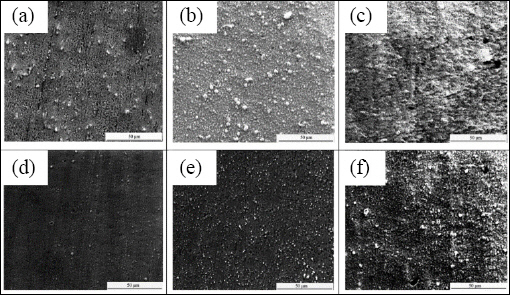
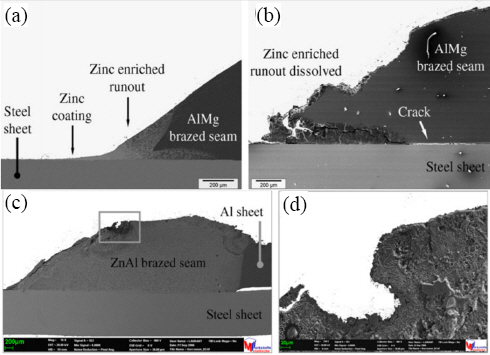








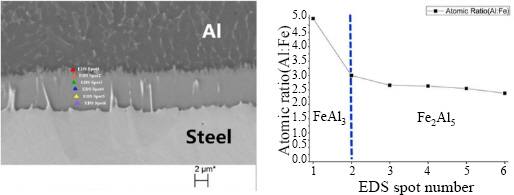


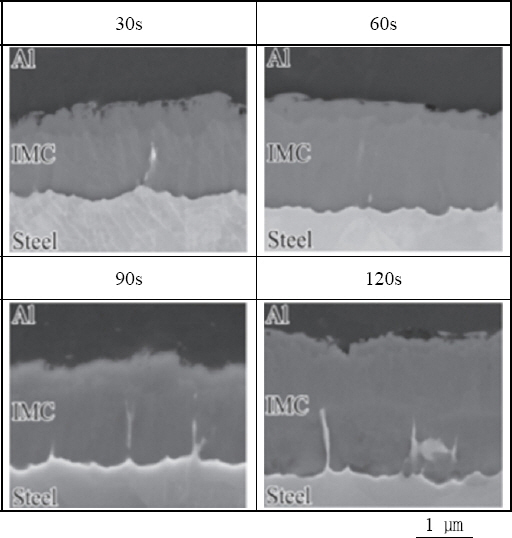



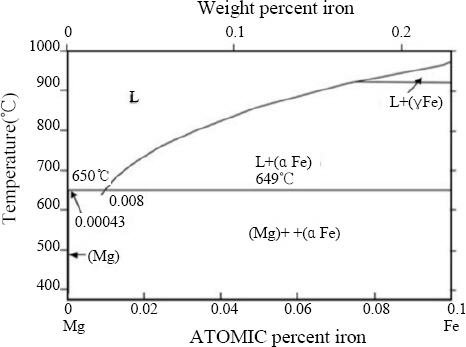



 PDF Links
PDF Links PubReader
PubReader ePub Link
ePub Link Full text via DOI
Full text via DOI Download Citation
Download Citation Print
Print



